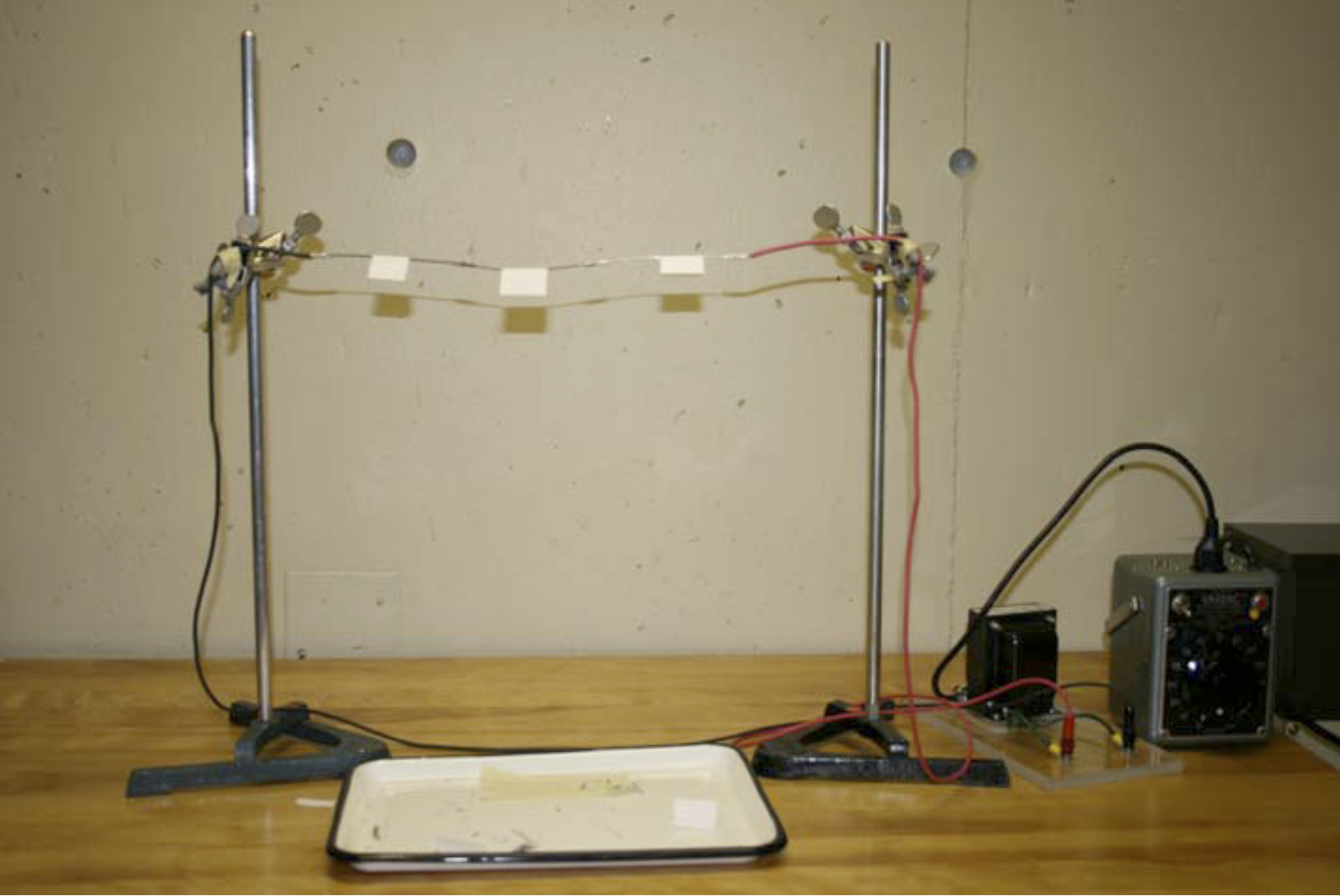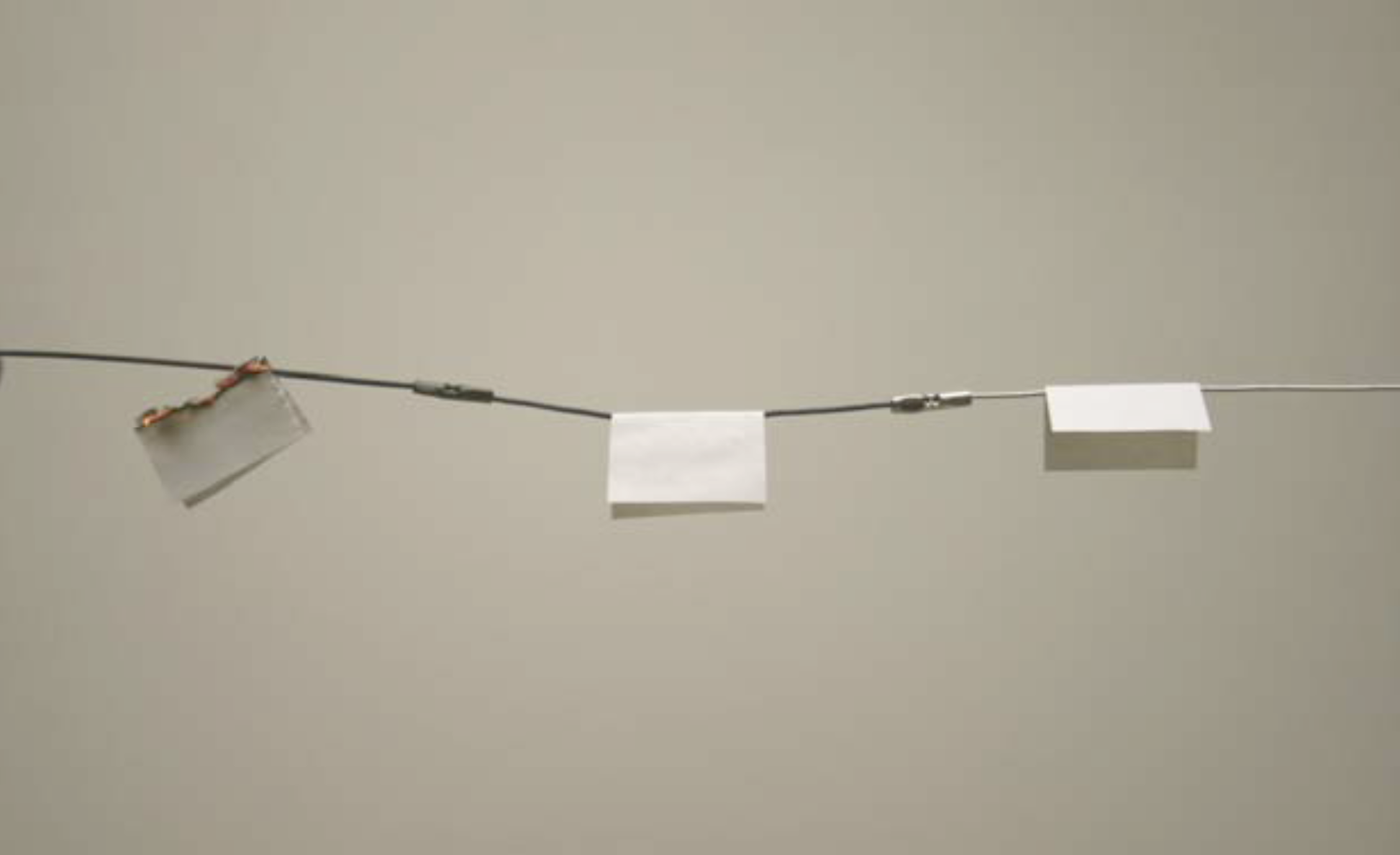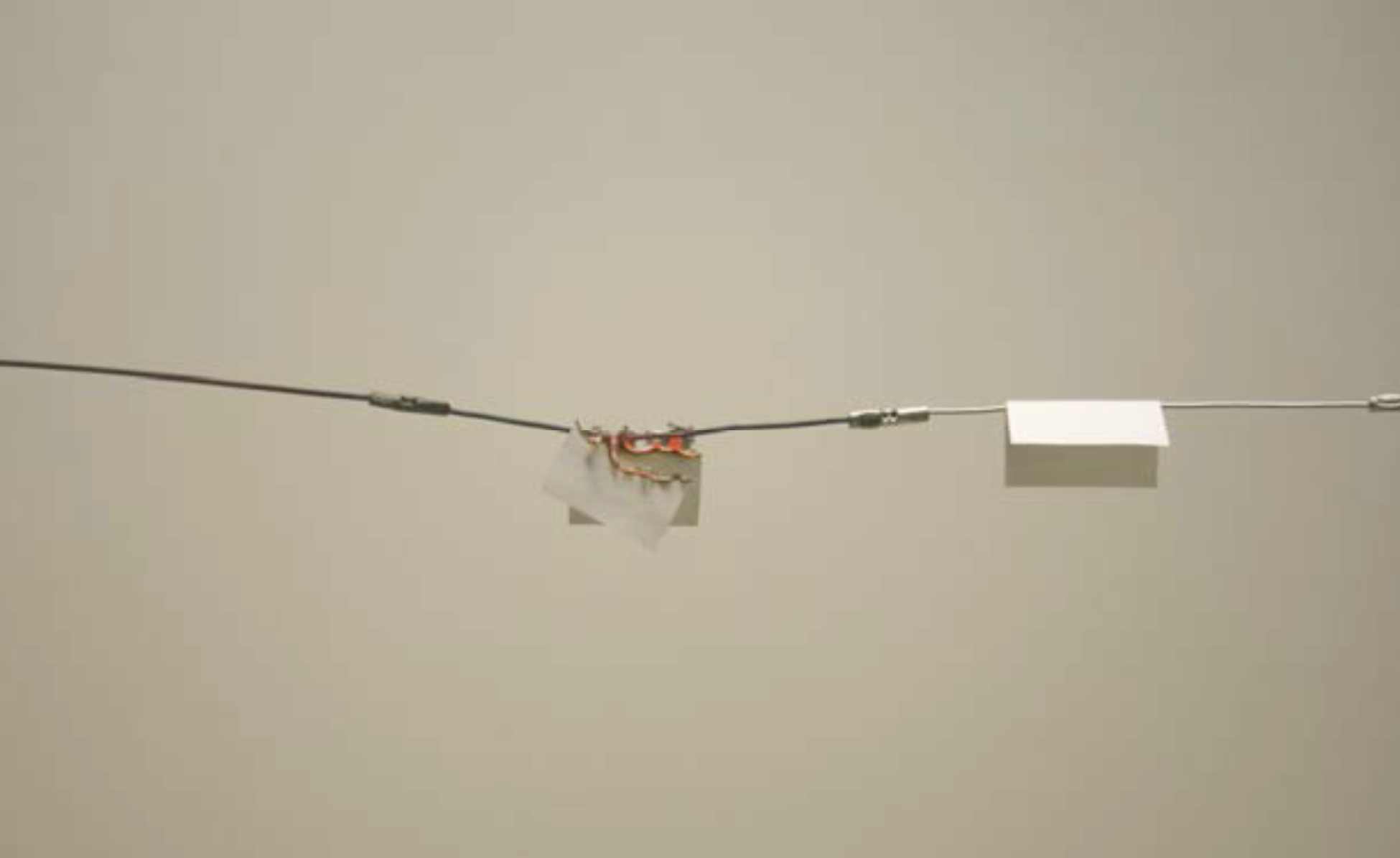Wire Fire!
February 01, 2009 Filed in:
Demo CornerJoanne O’Meara, Department of Physics, University of Guelph
omeara@physics.uoguelph.ca
This demonstration is a nice way to illustrate the
P =
I 2R relationship that is discussed in electric circuits. Figure 1 illustrates the equipment: a Variac transformer takes the wall output of 120 V and generates a variable voltage from 0 to 140 V. This is then sent through a Hammond Manufacturing transformer (167X5), converting down to 5 V output. We use this second transformer in order to increase the current through the wires. The output from the second transformer is connected to three wires in series: approximately 10 cm in length of each of ~18 gauge Nichrome, steel and copper. A piece of folded paper is placed on each wire.
 Figure 1: equipment setup for demonstration.
Figure 1: equipment setup for demonstration.Because the wires are connected in series, the same current will flow through each one. This means that the relative power output of each wire depends on the relative resistance, which varies with the wire material. Table 1 gives the approximate resistivities (
ρ) of the materials involved. (Recall that the resistance
R of a wire of length
L and cross-sectional area
A is given by
R =
ρL/
A.)
 Table 1: resistivities of wire materials.
Table 1: resistivities of wire materials.
Before we turn on the Variac to conduct the demonstration in class, I provide the students with the values given in table 1 and I ask them to rank the power output of the three wires. The majority of students indicate that the Nichrome will have the greatest output while the copper has the smallest.
We then turn on the Variac and increase the output voltage to approximately 80 or 90 V. With a video camera zoomed in on the wires displayed on the lecture hall screen, it is clear that the paper on the Nichrome wire begins to smoke and eventually burns through and falls from the wire to the enamel plate below. The paper on the steel and copper wires is unchanged. See figure 2.
 Figure 2: With the Variac output at ~90 V, the paper on the Nichrome wire (far left) burns and falls off. The paper on the steel wire (middle) and the copper wire (far right) are unchanged. (Note that the copper wire has a tin coating.)
Figure 2: With the Variac output at ~90 V, the paper on the Nichrome wire (far left) burns and falls off. The paper on the steel wire (middle) and the copper wire (far right) are unchanged. (Note that the copper wire has a tin coating.)
I then ask the students what we need to do to get the other pieces of paper to ignite. They tell me to turn up the voltage on the Variac, so we increase the output to approximately 115 V. The paper on the steel wire now burns and falls off, while the paper on the copper wire remains intact (figure 3).
 Figure 3: With the Variac output at ~115 V, the paper on the steel wire burns and falls off. The paper on the copper wire is unchanged.
Figure 3: With the Variac output at ~115 V, the paper on the steel wire burns and falls off. The paper on the copper wire is unchanged.
They always want me to turn the Variac up all the way, and when we do, the Nichrome and steel wires glow nicely but the paper on the copper wire is unaffected. I usually ask them at this point which type of wire they would choose to send current through the walls of their house – not too many students opt for Nichrome!
Column Editor: Ernie McFarland, Physics Department, University of Guelph, Guelph, Ontario, N1G 2W1 Tags: Electricity, Safety





